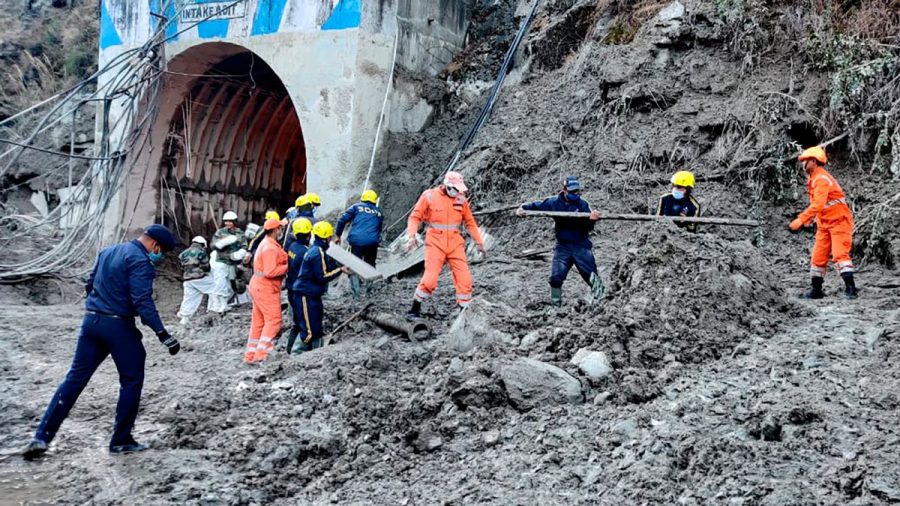The Aftermath of India’s Deadly Glacier Collapse
This past Sunday, February 7, there was a Himalayan glacier burst in northern India’s Uttarakhand state, leaving at least 26 individuals dead and around 150 people (still) missing. When a large chunk of the glacier broke off and fell into the river, an avalanche and massive deluge were triggered, washing away damns, hydroelectric power plants, and numerous bridges and roads. The majority of those missing were believed to have been washed away from two hydroelectric power stations targeted along the Dhauli Ganga river. Although emergency workers are tirelessly searching for people amidst the commotion, according to India’s NDTV broadcaster, the tunnel is blocked with slush and debris. Unfortunately, there has only been limited contact with the workers since Sunday and officials claim it is challenging to locate the workers in the tunnel.
Hundreds of troops, paramilitaries, and military helicopters have been sent to the region to offer assistance with the rescue efforts. The efforts are centered on multiple sites, including a tunnel over 650 feet long. Although a strenuous task, rescue workers and locals have tried to clear the entrances to the tunnels by using shovels and mechanical diggers. From the hospital bed, one victim of the glacier collapse described the moment the tunnel flooded. “We heard screams, ‘get out, get out’. We didn’t know what was happening. We started running to escape when the force of the water gushed in through the mouth of the tunnel. We couldn’t get out because of that,” he said. He continued on to explain how the worsening conditions prompted him to lose hope, assuming he would not make it out alive.
The prevalent question of “Why?” remains at the forefront of the collapse. This tragic occasion is not the first of its kind. Uttarakhand state is positioned along the western Himalayan mountains and has seen several floods and landslides in recent years. In 2013, when heavy monsoon rains provoked massive flooding, more than 6,000 lives were lost, left missing, or presumed dead. While an investigation is continuing into what caused the suspected glacier burst, environmentalists were quick to conclude that the partial collapse of the glacier on Sunday could have a direct correlation to the heightening threat of climate change. Experts have long raised concerns over large dams being built on the state’s rivers and have continually campaigned against development on its flood plains. “There is no doubt that global warming has resulted in the warming of the region,” said Dr. Farooq Azam, a professor of glaciology and hydrology. “Climate change-driven erratic weather patterns like increased snowfall and rainfall [and] warmer winters have led to the melting point of a lot of snow.” If immediate precautions and regulations are not implemented in those catchment areas, then the likelihood of another natural tragedy is at large.

Anushka Elavia is currently a senior at West Morris Mendham High School - Class of 2023. In school, she is a Class Officer for Amnesty International/ UNICEF...








